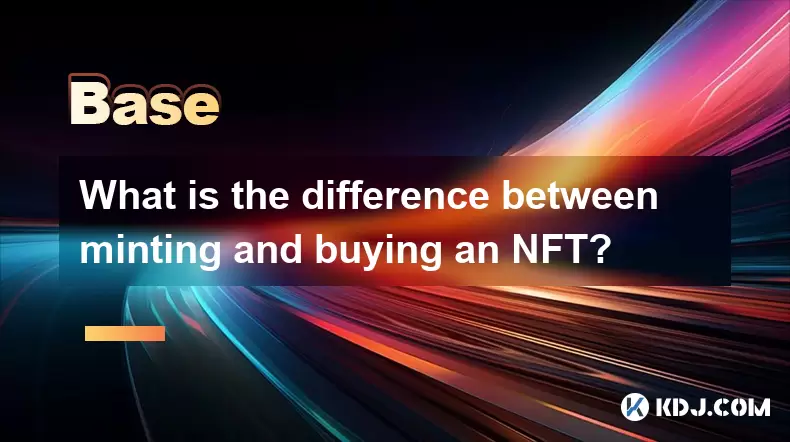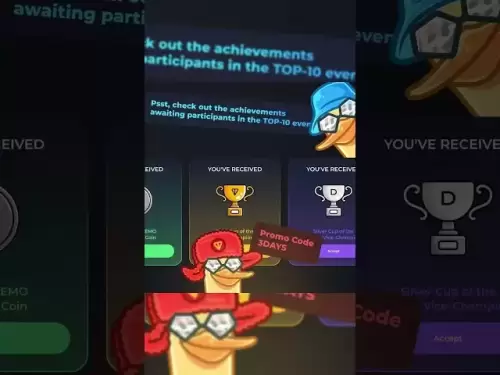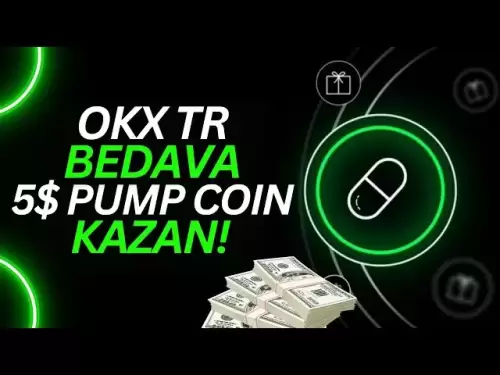-
 Bitcoin
Bitcoin $117100
0.03% -
 Ethereum
Ethereum $3751
0.52% -
 XRP
XRP $3.540
2.92% -
 Tether USDt
Tether USDt $1.000
-0.03% -
 BNB
BNB $766.2
2.34% -
 Solana
Solana $197.0
9.90% -
 USDC
USDC $0.9998
-0.01% -
 Dogecoin
Dogecoin $0.2740
1.78% -
 Cardano
Cardano $0.8900
4.86% -
 TRON
TRON $0.3145
0.94% -
 Hyperliquid
Hyperliquid $44.10
-3.58% -
 Stellar
Stellar $0.4720
2.49% -
 Sui
Sui $3.978
2.67% -
 Chainlink
Chainlink $19.38
1.24% -
 Hedera
Hedera $0.2697
0.17% -
 Avalanche
Avalanche $25.47
2.65% -
 Bitcoin Cash
Bitcoin Cash $521.0
-3.52% -
 Shiba Inu
Shiba Inu $0.00001543
1.08% -
 Litecoin
Litecoin $115.5
-1.06% -
 UNUS SED LEO
UNUS SED LEO $8.992
0.01% -
 Toncoin
Toncoin $3.345
3.01% -
 Polkadot
Polkadot $4.481
1.11% -
 Uniswap
Uniswap $10.96
5.09% -
 Ethena USDe
Ethena USDe $1.001
0.02% -
 Pepe
Pepe $0.00001414
2.00% -
 Monero
Monero $318.9
-1.25% -
 Bitget Token
Bitget Token $4.902
0.16% -
 Dai
Dai $0.9999
-0.02% -
 Aave
Aave $320.8
0.07% -
 Bittensor
Bittensor $448.1
8.95%
What is the difference between minting and buying an NFT?
NFTs revolutionize digital ownership by allowing creators to mint unique assets on blockchain platforms, enabling secure transactions and new monetization opportunities.
Jul 22, 2025 at 04:28 am

Understanding the Concept of NFTs
Non-Fungible Tokens (NFTs) have revolutionized the digital asset space by offering unique ownership rights to digital items. These tokens are built on blockchain technology, primarily Ethereum, and are used to represent ownership of unique items such as digital art, music, videos, and even virtual real estate. The key feature of NFTs is that they are non-interchangeable, meaning each token has distinct properties and cannot be replaced by another identical token. This uniqueness is what makes NFTs valuable and sought after in the digital economy.
What Does Minting an NFT Mean?
Minting an NFT refers to the process of creating a new digital asset and recording its ownership on the blockchain. When an artist or creator mints an NFT, they are essentially converting their digital file into a unique, verifiable asset that can be bought, sold, or traded. The minting process involves uploading the digital file to an NFT marketplace, setting parameters such as name, description, and properties, and then paying a gas fee to record the NFT on the blockchain. Once minted, the NFT becomes a permanent part of the blockchain and cannot be altered or deleted.
- Step 1: Choose an NFT marketplace (e.g., OpenSea, Rarible, Mintable).
- Step 2: Connect a compatible wallet (e.g., MetaMask).
- Step 3: Upload the digital file you want to tokenize.
- Step 4: Add metadata such as name, description, and properties.
- Step 5: Pay the gas fee to finalize the minting process.
Buying an NFT: How It Works
Buying an NFT is the process of acquiring an already minted digital asset from its current owner. Unlike minting, which creates a new NFT, buying involves purchasing an existing token from a marketplace. Buyers can browse NFTs on platforms like OpenSea, Foundation, or LooksRare, place bids, or buy at a fixed price. The transaction is conducted using cryptocurrency, typically Ethereum or other blockchain-native tokens, and once completed, the ownership is transferred to the buyer’s wallet.
- Step 1: Choose a reputable NFT marketplace.
- Step 2: Connect your crypto wallet.
- Step 3: Browse or search for NFTs you're interested in.
- Step 4: Place a bid or opt for a direct purchase.
- Step 5: Confirm the transaction and pay the required fees.
Key Differences Between Minting and Buying an NFT
While both minting and buying NFTs involve blockchain transactions, there are significant differences between the two processes. Minting is the creation of a new NFT, while buying is the acquisition of an existing one. The cost structure also varies—minting requires paying gas fees to create the NFT, whereas buying involves paying the listed price plus transaction fees. Additionally, minting gives creators full control over the NFT’s properties and initial pricing, while buyers have no influence over these aspects once the NFT is on the market.
Another important distinction is ownership rights. Minting grants the creator the ability to set royalties for future sales, ensuring they receive a percentage every time the NFT is resold. In contrast, buyers do not have control over royalty settings unless specified by the original creator. Furthermore, minting requires technical knowledge of blockchain and NFT platforms, while buying is generally more straightforward for users familiar with cryptocurrency transactions.
Use Cases and Implications for Creators and Collectors
For creators, minting NFTs offers a way to monetize digital content without relying on traditional intermediaries. Artists, musicians, and content creators can directly engage with their audience, retain control over their work, and earn royalties from secondary sales. On the other hand, collectors benefit from buying NFTs as a way to invest in digital assets, support creators, and potentially profit from reselling at a higher price.
The impact of minting vs. buying extends beyond individual transactions. Minting contributes to the growth of the NFT ecosystem by introducing new assets, while buying drives demand and liquidity. Both activities play a crucial role in shaping the market dynamics of NFTs and influence how digital ownership is perceived and valued.
Frequently Asked Questions (FAQs)
1. Can I mint an NFT without paying gas fees?
Yes, some platforms offer gas-free minting options where the gas fees are deferred until the NFT is sold. This is known as lazy minting and is available on platforms like OpenSea and Rarible.
2. Is it possible to buy an NFT without using cryptocurrency?
Most NFT transactions require cryptocurrency, but some platforms now allow credit card payments for NFT purchases. However, this often involves third-party payment processors and may not be available on all marketplaces.
3. What happens if I lose access to my wallet after minting or buying an NFT?
If you lose your wallet’s private keys or recovery phrase, you will lose access to your NFTs permanently. It is crucial to store recovery information securely and avoid sharing it with anyone.
4. Can I mint an NFT on a blockchain other than Ethereum?
Yes, many blockchains support NFT minting, including Binance Smart Chain, Solana, Polygon, and Tezos. Each blockchain has its own tools, fees, and user base, so it’s important to choose one that aligns with your goals.
Disclaimer:info@kdj.com
The information provided is not trading advice. kdj.com does not assume any responsibility for any investments made based on the information provided in this article. Cryptocurrencies are highly volatile and it is highly recommended that you invest with caution after thorough research!
If you believe that the content used on this website infringes your copyright, please contact us immediately (info@kdj.com) and we will delete it promptly.
- Cryptos, Meme Coins, Buy Now: Riding the Wave of Hype
- 2025-07-22 08:30:13
- Altcoins in July 2025: Trends, Insights, and a Few Wildcards
- 2025-07-22 08:50:13
- Yuan Stablecoin on Conflux: A New Era for Cryptocurrency?
- 2025-07-22 08:30:13
- Cosmos (ATOM) Network Upgrade Fuels Bullish Momentum, But Overbought Signals Emerge
- 2025-07-22 08:50:13
- Dogecoin, ROI, and the Rising Tide of Meme Coins: What's Next?
- 2025-07-22 08:55:13
- ACRED: Apollo's Tokenized Credit Fund Bridges Wall Street and DeFi
- 2025-07-22 08:55:13
Related knowledge

What is the difference between CeFi and DeFi?
Jul 22,2025 at 12:28am
Understanding CeFi and DeFiIn the world of cryptocurrency, CeFi (Centralized Finance) and DeFi (Decentralized Finance) represent two distinct financia...

What is the difference between a sidechain and a Layer 2?
Jul 20,2025 at 11:35pm
Understanding the Concept of SidechainsA sidechain is a separate blockchain that runs parallel to the main blockchain, typically the mainnet of a cryp...

What is the Inter-Blockchain Communication Protocol (IBC)?
Jul 19,2025 at 10:43am
Understanding the Inter-Blockchain Communication Protocol (IBC)The Inter-Blockchain Communication Protocol (IBC) is a cross-chain communication protoc...

How does sharding improve scalability?
Jul 20,2025 at 01:21am
Understanding Sharding in BlockchainSharding is a database partitioning technique that is increasingly being adopted in blockchain technology to enhan...

What is the "crypto trilemma" of scalability, security, and decentralization?
Jul 19,2025 at 06:28pm
Understanding the Concept of the Crypto TrilemmaThe crypto trilemma refers to the challenge of simultaneously achieving scalability, security, and dec...

What is a cliff and vesting schedule in tokenomics?
Jul 20,2025 at 10:28am
What Does a Cliff Mean in Tokenomics?In tokenomics, a cliff refers to a specific period during which token holders are not allowed to access or transf...

What is the difference between CeFi and DeFi?
Jul 22,2025 at 12:28am
Understanding CeFi and DeFiIn the world of cryptocurrency, CeFi (Centralized Finance) and DeFi (Decentralized Finance) represent two distinct financia...

What is the difference between a sidechain and a Layer 2?
Jul 20,2025 at 11:35pm
Understanding the Concept of SidechainsA sidechain is a separate blockchain that runs parallel to the main blockchain, typically the mainnet of a cryp...

What is the Inter-Blockchain Communication Protocol (IBC)?
Jul 19,2025 at 10:43am
Understanding the Inter-Blockchain Communication Protocol (IBC)The Inter-Blockchain Communication Protocol (IBC) is a cross-chain communication protoc...

How does sharding improve scalability?
Jul 20,2025 at 01:21am
Understanding Sharding in BlockchainSharding is a database partitioning technique that is increasingly being adopted in blockchain technology to enhan...

What is the "crypto trilemma" of scalability, security, and decentralization?
Jul 19,2025 at 06:28pm
Understanding the Concept of the Crypto TrilemmaThe crypto trilemma refers to the challenge of simultaneously achieving scalability, security, and dec...

What is a cliff and vesting schedule in tokenomics?
Jul 20,2025 at 10:28am
What Does a Cliff Mean in Tokenomics?In tokenomics, a cliff refers to a specific period during which token holders are not allowed to access or transf...
See all articles

























































































